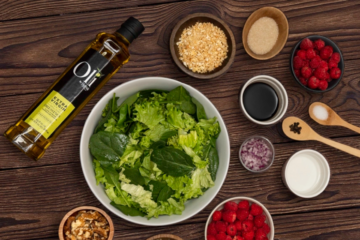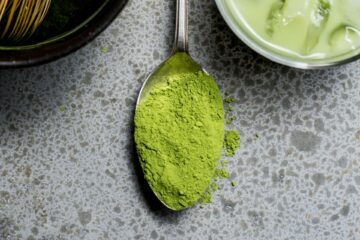There are so many reasons we love ramen, from the ease of preparation and quick cook times to how cheap it is and the diverse recipes one could get lost in. However, no amount of love for ramen can remove the unhealthy additives like MSG and the high sodium content that one tends to find in the average ramen seasoning, which brings us to why you’re here.
The answer to your questions on what to put in ramen instead of seasoning will be answered in this list of the 10 best alternatives to ramen seasoning. These ramen seasoning alternatives will leave you with a healthier and tastier meal than you’d have originally had. Covering every range from sweet to spicy and sour, these 10 best alternatives to ramen seasoning will leave you gasping in delight with every bite.
What to Put in Ramen Instead of Seasoning – 9 Best Alternatives
There are no limitations to what you can use in your ramen instead of seasoning, the options are as extensive as your taste buds are willing to accommodate. The 10 alternatives to ramen seasoning on this list have been curated from among all the mind-blowing options; some of them requiring more boldness to try than others. Here’s what they are and how to use them;
VEGETABLES, SPICES, AND SAUCES
These can be used individually or combined in ramen in place of seasoning. Vegetables that improve the flavor of ramen include scallions, bell peppers, tomatoes, etc. There’s a world of spices that can be used, such as ginger & garlic, parsley and so much more. Sauces include soy sauce, fish sauce, sriracha, etc.
CANNED BROTH
Should be real and preferably low in sodium. Be sure that your broth doesn’t contain monosodium glutamate (MSG).
LEMON PEPPER
Mix freshly squeezed lemon juice with ground black pepper, a pinch of turmeric, onion powder, and garlic powder.
This combination will make your ramen far more awesome than seasoning; sesame oil, chili powder, ginger, soy sauce, and pepper.
LEMON JUICE OR VINEGAR
Substitute the seasoning with lemon juice or vinegar such as Chinese or Japanese vinegar that can be used on their own and have a little salt and sugar.
SALAD DRESSING
Salad dressings that are low in sodium and fat such as Chinese/Japanese salad dressings are an awesome substitute.
TOMATO POWDER
Dehydrate tomato slices in an oven and pound/pulverize into powder. You can include dry spices into the mix and all you need to do is sprinkle the mix onto your drained ramen.
CHICKEN BOUILLON
Whatever bouillon you decide to use, be sure that it has little or no quantities of sodium in it or you’d be better off sticking to the ramen seasoning.
BARBECUE FLAVOUR
Use onion powder with chile powder, dry mustard, some cumin, and a dash of liquid smoke.
SOY SAUCE & JAPANESE RICE WINE (MIRIN)
For an interesting taste experience, add soy sauce and some Japanese rice wine (mirin) to your ramen. You can also add sesame oil, ginger, and garlic to the mix.
Whichever of these 10 best substitutes for ramen seasoning you decide to use, you’ll be sure to have an unforgettable taste experience. Stir-frying the ramen usually helps improve the taste so that you only need a few spices and/or sauces, just be sure to use healthy oil options and little quantities of oil in your stir fry. Another way to reduce the number of spices and/or sauces used without compromising on the taste is to drain out most of the ramen water before adding them into the mix.
Is Ramen Good Without Seasoning?
Yes, ramen is good without seasoning. Cooking instant ramen without the seasoning makes it a bit healthier as you have eliminated most of the high sodium content from the meal. Ramen remains a dish that is more of calories and nothing else, however, so remember to make your ramen nutritious by adding sources of protein (chicken, peas, eggs, etc.), vegetables and sauces, etc.
If your meal plans are not made up of just ramen and you eliminate the seasoning, it’s even more than fine to eat it every day without any issues. What you can do to further make it good would be to purchase ramen from brands that do not fry them to dry or use non-hydrogenated oils during their making process. On the other hand, you could simply drain out the initial cooking water and run the ramen under tap water to get rid of some of the oil – do this before you add the seasoning substitutes.
Read also: Best Vegetables to Add to Ramen
How Much Sodium Is in Ramen Noodles Without the Seasoning Packet?
220mg of sodium can be found in one ramen packet without the seasoning. The sodium content can increase up to about 1,760mg if you include the seasoning during preparation; i.e. 88% of the WHO recommended daily intake in just one pack of ramen with seasoning.
There’s good news though, as there are actual brands that consciously make healthy ramen with little or no sodium in them, although they may be a bit pricier than others. One of the popular healthy ramen options available is the Maruchan Less Sodium ramen with 25% less sodium than normal.
The subject of sodium in ramen with or without the seasoning is an extensive one and you can further satisfy your curiosity by reading further on it here.
Read also: How to Make Turkey Wings Fall Off the Bone
Conclusion
Healthy living is always the way to go, and the choice to eliminate or reduce sodium intake usually gotten from ramen noodles is always the correct choice. Whether your reasons are more of a culinary experience than a health journey doesn’t stop you from partaking either, so choose an alternative and have fun trying it out.





